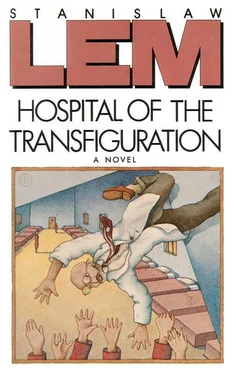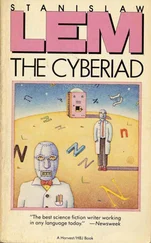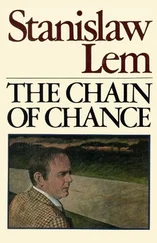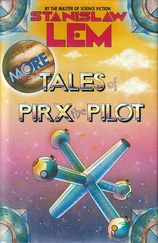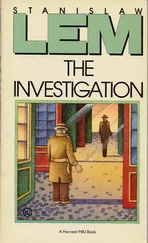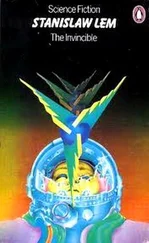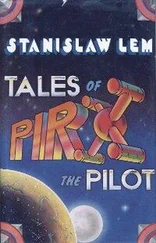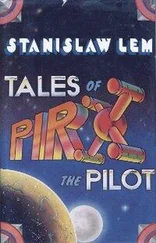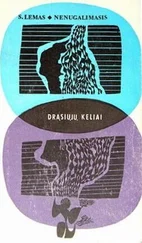All day long, Stefan could hear, through the wall, hammering, the scraping of heavy trunks, and the bumping of furniture. The other doctors greeted Łądkowski’s impending arrival with indifference. During dinner silence reigned, highlighted by the furious buzzing of flies. Stefan hung a sheet of wet gauze in his window in an effort to cool the hot dry air. He lay on the bed with a psychology text, looking at people’s photographs, keenly aware that they were variants of the same type, their mass existence seeming to clash with his sense of his own unexampled uniqueness. Simple alterations in the basic proportions accounted for individual differences: one face was centered on the eyes, another on the jaw, while the cheeks dominated a third. When he had lived in town, Stefan loved to imagine the faces of people walking ahead of him, especially women. The streets—those moving collections of faces—allowed him to play his game.
Pajączkowski suddenly interrupted these ruminations. He asked what his “respected colleague” was reading and then launched into his favorite topic. “Well, you won’t see that anymore,” he said, sounding melancholy. “Unfortunately, one no longer encounters such great, classic hysterical attacks with l’arc de cercle. I remember, at Charcot’s in Paris…”
He was getting worked up.
He must have noticed the faint grimace on Stefan’s lips, for he added, “Well, in some sense I suppose it’s a good thing, though hysteria is still with us. The trend has simply shifted to… to… but what did I want to tell you?”
Stefan had been waiting for this explanation, since the visit surely heralded something exceptional. Pajpak said that the famous Łądkowski, the friend of the Americans Lashley and Goldschmidt, had been thrown into the street by the Germans. “Into the street,” he repeated, his voice breaking. “And in return we must do anything in our power…”
He asked Stefan to call on the dean when his turn came.
On the evening of the dean’s arrival, Marglewski accompanied Pajączkowski and Kauters on what he called a presentation of letters of accreditation. They three were the highest ranking. Nosilewski and Rygier went on the second day. Staszek and Stefan had their turn on the third. Staszek muttered something about antediluvian customs: they were supposed to be colleagues, working together, united against the enemy, yet when it came to these idiotic visits they had to line up according to their position.
Stefan dug an ancient black tie out of the bottom of his suitcase and put it on, hiding the stains under his jacket. They set out.
Łądkowski looked like a skinny lion with no neck. He had a knobby head, thick silver hair, a nose like a cauliflower with tufts of hair sticking out of the nostrils, and a face of sharp, irregular angles with lopsided gray eyebrows that wavered with his every move. Wrinkles ran down from his carefully shaved chin. His profile suggested Socrates—up to a point.
Having seen several doctors’ apartments in the building, Stefan was curious about the professor’s, however hastily equipped it may have been. After all, the wagon had made six trips to the station and back.
Shelves sagging under masses of books ran along the walls. Most of the books had black bindings with gold letters on the spines. Large folios of professional journals occupied the lower levels. A yellow or green volume shined here and there, as if to break up the monotony. The desk stood catty-corner under the window, a row of textbooks along its front edge. Carpets softened the harshness of what would otherwise have resembled a monk’s cell: one, having a deep pile, lay just inside the door; another hung on the wall as a tapestry, forming a background for Łądkowski’s silhouette.
Staszek and Stefan muttered obsequiously as they introduced themselves. The professor’s conversation was lively: while seeming to talk about everything, in fact he said nothing. The suggestion was that they had come to him for advice and enlightenment. He asked them about their work and their interests—professional interests, of course, personal relations in the asylum being conspicuously unmentioned. He behaved with simple, genuine equality. It was exactly this that put them at a great distance. A kind of noblesse prevented him from subduing his inner haughtiness. Stefan felt even smaller when he looked at two bronze heads standing at opposite ends of a low shelf: Kant and a Neanderthal. He noticed with surprise that although the Neanderthal’s bulbous skull and vaulted eye-sockets hinted at a wildness absent from the other figure, both heads shared a weary loneliness, as though they embodied the life and death of entire generations.
Portraits hung on the walls: Lister, a Byronic pathos in his forsaken gaze; Pavlov, his jutting chin highlighting the brutal features of an inquisitive child; and Emil Roux, an old man racked by insomnia.
When he judged that he had given the youngsters their due, the professor initiated an exchange of bows and brief but warm handshakes with such breathtaking tact that Stefan and Staszek, slightly frustrated, found themselves in the corridor almost despite themselves.
“Damn,” Stefan reflected, “a great man!” He was suddenly overcome by a desire for one of those elemental discussions that shake the world’s foundations, but his friend let him down. The grace Staszek had shown with Łądkowski was gone. During their visit, it seemed as if he had left his troubles outside the professor’s door. Now he picked them up again. He was ill with Nosilewska worse than ever. But she, tanned and indifferent, answered his tragic questing gaze with a meaningless smile. She was ever the doctor, seeing a blush as a rush of blood to the face and a thumping heart as a symptom of pressure from the stomach. She was a charged battery of femininity, and her every movement tortured Staszek. Yet he dared not speak: silence afforded him the shreds of hope inherent in uncertainty. Stefan had long acted as comforter, serving so conscientiously that he sometimes savored his own skills. Now and then he struck a false note, bursting into raucous laughter at one of Staszek’s confidences or slapping his friend heartily on the back, but he always apologized immediately afterward.
July raced by. August was hot, and apples dropped in the starry darkness. One night, after an evening storm, as trees shaken by thunder settled into stillness in a dusk heavy with moisture, Marglewski appeared ceremoniously in Stefan’s room: he was organizing a scientific meeting and a show of patients.
“It will be fascinating,” he said. “But I don’t want to anticipate. You’ll see for yourself.”
That very evening Stefan had invited Nosilewska to his room—an attempt to resolve Staszek’s unbearable indecision once and for all. His scheme had misfired again.
Rows of plush red chairs had been set up in the library. Rygier entered first, followed by Kauters, Pajączkowski, Nosilewska, and finally Staszek. When it seemed time to start and everyone watched expectantly as Marglewski, standing behind a high lectern covered with papers, cleared his throat, Łądkowski arrived. That was a real surprise. The old man bowed at the doorway, sank into the large armchair Marglewski had prepared for him nearest the podium, crossed his arms over his chest, and sat motionless. Stefan tried to compensate Staszek for his disappointment by maneuvering the chairs so that Nosilewska sat between him and his friend. The lecturer stood behind the lectern, coughed again, and, having arranged his papers, swept the audience with the gleam of his steel-rimmed glasses.
This presentation, he explained, was actually an airing of materials that had not yet been worked up into their final form. Its theme was the specific influences exerted on the human mind by various mental diseases. He spoke of a phenomenon that could be described as the yearning of a convalescent patient for his former malady. It occurred especially among simple, unintelligent people whose inner life schizophrenia had enriched with states of ecstasy. Once cured, such patients mourned their disease.
Читать дальше
